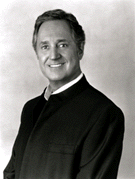Neil Sedaka
 High-priced farewell tours have become routine for aging pop stars craving one last payday from a nostalgia-hungry public. Similarly common are overwrought news conferences at which those stars bid a tearful goodbye to fans, while also fueling publicity for their "final" concerts and commemorative merchandise.
High-priced farewell tours have become routine for aging pop stars craving one last payday from a nostalgia-hungry public. Similarly common are overwrought news conferences at which those stars bid a tearful goodbye to fans, while also fueling publicity for their "final" concerts and commemorative merchandise. But Neil Sedaka, whose hit singles span four decades and whose career began as a teen-aged songwriter for such R&B and doo-wop stars as Dinah Washington, the Clovers and LaVern Baker, doesn`t like to do things in a routine way.
His decision to retire, which he tentatively disclosed in this recent interview from his Los Angeles home, was made without benefit of a single press release or media event. Nor was there a hint of hype from the man whose U.S. record sales between 1958 and 1963 were second only to Elvis`.
"I`m going to wind up this year," said the matter-of-fact Sedaka, who has performed steadily since his Elton John-aided comeback in the mid-1970s.
"You have to know when to bow out gracefully, and I think this will be the final year," he continued, sounding as if this were the first time he`d said these words aloud. "I`ve been doing it for so long, and I`m young enough to want to enjoy the rest of my life."
Sedaka, 61, was hospitalized early last month with a heart condition. He underwent a successful angioplasty Jan. 10, then canceled several concerts after his doctors ordered him to rest.
"I`m fine now," he said from his Los Angeles home. "The doctors showed me a picture of my heart, before and after, and I feel much more confident."
Sedaka acknowledged that he hopes to still perform periodically "in Las Vegas and Atlantic City." But he insisted his decades of extensive touring are coming to an end.
Asked what he`d say to fans who ask him to reconsider, Sedaka replied: "Well, you know, I enjoyed it. I traveled the world. I was a musical ambassador - an American representative - in many countries, and had a wonderful opportunity. And it`s not the same to me now."
Might he follow in the footsteps of longtime admirer Elton John, The Who and other music stars, whose much-publicized "retirements" proved short-lived?
"I really don`t think so," he said.
RAGS TO RIFFS
The son of a cab driver and a housewife, Sedaka was born and raised in Brooklyn. His rags-to-riches story reads like a film script, or at least a play on Broadway - he, in fact, is negotiating for a musical based on his life.
A piano prodigy, Sedaka was 8 when he earned a scholarship to the Julliard School of Music. At 16, he won top honors as New York`s "outstanding young classical pianist," in a city-wide competition judged by piano legend Arthur Rubinstein.
But it was rock `n` roll, doo-wop and R&B that provided the diminutive singer-songwriter with a form of salvation, musically and personally.
"I discovered I could write songs when I was 13," said Sedaka, recalling the year - 1952 - he teamed with lyricist Howard Greenfield, then 16.
"And that was a revelation. Because I wasn`t very popular in school. I didn`t play ball, I wasn`t a jock; I was very shy and introverted. Once I could sit down and play pop music, I was invited to all the parties."
Sedaka debuted his and Greenfield`s first rock song, the "Earth Angel"-inspired "Mr. Moon," at his high-school talent show. Backed by a drummer and saxophonist, Sedaka nearly incited a riot, as he laughingly recounted.
"My goodness!" he said. "I was a freshman, and rock was still very new and was considered very decadent. `Mr Moon` was kind of a risque song. After the first performance, the principal called me into his office and asked that I not sing it for the second performance. It sounds like one of those old rock `n` roll movies.
"There was a petition from the students who wanted me to play it, and I did perform it a second time. And they loved it. I was then invited to where all the school toughs in black-leather jackets hung out, and I was able to enter that world."
Also in 1952, Sedaka briefly became a member of an early edition of the doo-wop group the Tokens, which in 1961 would top the charts with "The Lion Sleeps Tonight." While still in high school, he often took the subway to Harlem`s Apollo Theater, where he heard Ray Charles and Clyde McPhatter in his pre-Drifters days.
By the time Sedaka was 17, he and Greenfield were writing songs for McPhatter ("Since You`ve Been Gone"), LaVern Baker ("I`ve Waited Too Long"), the Cookies ("Passing Time") and other stars of the day.
"I`m very proud of it," Sedaka said. "And books do mention that I did start with R&B, even though the first hit I wrote was `Stupid Cupid` for Connie Francis."
In 1958, a year after he graduated from high school and the same year "Stupid Cupid" charted, Sedaka and Greenfield became part of the stable of gifted young songwriters at Manhattan`s now-legendary Brill Building. There, they worked alongside Paul Simon, Neil Diamond (then a neighbor of Sedaka`s) and Carole Klein, who as Carole King would later become a solo star. A romance between Klein and Sedaka inspired his 1959 Top 10 hit, "Oh! Carol," and her less-heard response, "Oh! Neil."
Sedaka`s first solo singles, 1957`s "Fly, Don`t Fly on Me" and the next year`s "Laura Lee," were commercial duds. But his debut recording for RCA, 1959`s "The Diary," reached No. 14 on the U.S. pop charts. His follow-up, "I Go Ape," an atypically frenetic rocker, was banned by some radio stations and only rose as high as No. 42.
"I met Mick Jagger not long ago, and he said that `I Go Ape` was the first record he bought," said Sedaka, chuckling.
"It was my version of a Jerry Lee Lewis/Chuck Berry kind of song, and it nearly finished my career! It followed `The Diary,` a slow, doo-wop ballad, and people were a little dismayed. But I went out of my way to write different types of songs. Being from the Brill Building and Tin Pan Alley school, I made a conscious effort to change with each song."
Starting with "Oh! Carol" in late 1959, Sedaka scored a string of bubbly teen-pop hits. They included "Calendar Girl," "Happy Birthday, Sweet Sixteen," and - in 1962 - "Breaking Up Is Hard to Do," which would again top the charts in 1975 after he re-recorded it as a ballad.
"We were New York teen-agers, writing about teen-aged life," he said of his early success with Greenfield. "I thought the songs were important, but I never knew they would be playing 40 years later on the radio."
The British Invasion of 1964 soon prompted Sedaka`s decision to quit performing. He spent the rest of the decade writing songs that were recorded by other artists, among them Elvis, the Fifth Dimension and Tom Jones. In 1972, Sedaka moved to England with his wife, Leba, and their two young children.
He soon recorded the first of two solo albums with the members of an obscure English group called Hotlegs, who would soon earn fame as 10cc. In 1974, he signed a U.S. record deal with Rocket, the label launched by longtime Sedaka fan Elton John.
Late that same year, Sedaka topped the U.S. charts for the first time since 1962 with his song "Laughter in the Rain." Several other hits followed, including 1975`s "Bad Blood," which featured John on backing vocals.
But Sedaka hasn`t been back on the Top 40 charts since 1980`s "Should`ve Never Let You Go," a romantic duet with his daughter, Dara. His most recent albums, 1995`s "Classically Sedaka" and 1997`s jazz-inflected "Tales of Love and Other Passions," were released on small, independent labels and are almost impossible to find.
Undaunted, for the past two decades he has spent about half of each year performing, often in casinos and regional theaters. Until now.
"I`ll cut back gradually," Sedaka said of his decision to wind down his touring this year. "I hope the songs will outlive me; some of them might. We all hope for immortality of some kind. I would like to be remembered for (making) melodic music, emotional music, happy music, and for being a son of the beginnings of rock `n` roll."
(c) Copley News Service
advertisement

Author: George Varga
Archives
The Verve Pipe
Judy Collins
Jewel
Ben E. King
NSYNC
311
Nickel Creek
Brian Wilson
Spinal Tap
Mark Knopfler
SR-71
Stevie Nicks
Iggy Pop
Henry Threadgill
Joe Jackson
More Articles







